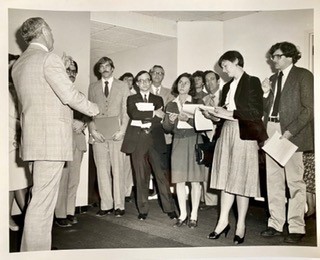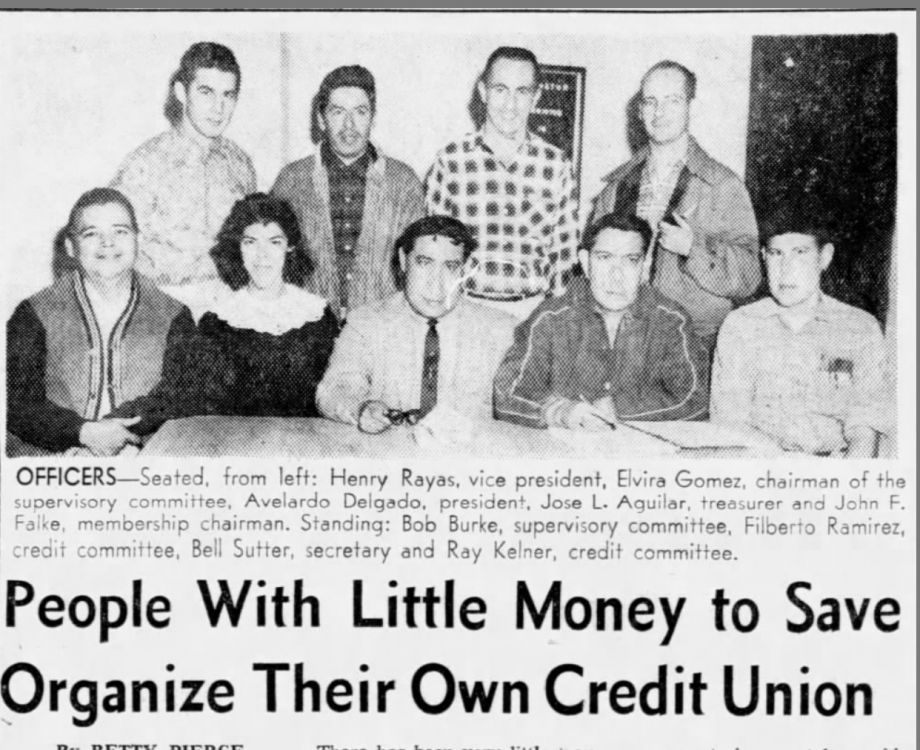Let’s get right to the point. NCUA does not believe in member democracy, member rights or any aspect of owner-member control.
The cooperative model capitalizes on the character of its member-owners who join to help each other attain a better economic status. But that is not NCUA’s belief. For them, members are merely customers. NCUA’s primary duty is regulatory compliance, not enhancing the owner’s role. The democratic structure of one member one vote in elections is a theory rarely practiced. And its practice has nothing to do with the regulator’s oversight.
There are numerous examples of not just NCUA indifference, but outright rejection of requests to protect the property and process rights of member owners. The examples are rampant in three areas: the administration of mergers, the oversight of bylaw requirements/amendments framing director fiduciary conduct, and when asserting absolute, unaccountable and unexplained regulatory actions to close member owned institutions.
Unconstrained-Unexplained Closures
Following are two examples this month of NCUA forcing a merger without a member vote or any form of due process, and just vague wording: “The conditions of the merger met regulatory provisions that allowed for a waiver of the membership vote.” No facts to justify this cancellation of $32.1 million Gabriels Community CU charter.
A second example is cited again by CU Times: “An NCUA spokesperson said the $2.9 million Waconized Federal Credit Union in Waco, Texas was given the OK to merge with the $16.7 million 1st University Credit Union, also based in Waco. The consolidation was allowed in accordance with NCUA Rules and Regulations, Part 708(b), which gives the federal agency the authority to permit a merger without a member vote under certain circumstances.”
This arbitrary, unexplained use of NCUA authority is not new. In a February 26, 2022 post, the End of Kappa Alpha PSI (occurring in 2010), I provide the detail of NCUA’s liquidation while an appeal was pending of this black fraternity’s credit union.
This is not conduct limited to times of crisis. I list many other situations where NCUA arbitrarily removed management, forced mergers or performed instant liquidations without due process as recently as May 2020. In a single example from April 2016 the agency summarily liquidated six credit unions that reported collective net worth of 17.6% without any conservatorship or other steps required by its own rules.
At the time of most critical and consequential regulatory action, the agency rebuffs any explanations. All of the circumstances are kept behind closed doors: “we do not comment on our efforts or conditions related to conserved (or troubled) credit unions” is the standard defense.
At the moment the member-owners’ role is negated, the NCUA goes mum. Accountable to no one. As the two most recent examples occurred within a week of December yearend, it is easy to surmise why these silent closures were not revealed then. If done after yearend, a call report disclosing their financial condition would have to be filed. Such a final accounting, if available, would illuminate not a credit union collapse, but a failure of effective examination and supervisory oversight.
The continuing danger of these unopposed regulatory precedents is that they encourage further use of arbitrary power. Credit unions see this. Examiners will take their cues to assert their unchecked authority. Recommendations (DORs) wlll order credit unions to sell millions in underwater investments or borrow unneeded loans solely to reduce modeled interest rate risk will be issued. The threat of further action and CAMELS downgrades is all that is needed to force immediate, costly options that reduce member capital.
Lack of regulatory transparency at critical points in any credit union’s circumstances perpetuates unchecked and unaccountable regulatory power. Secret actions always hovering over credit unions in difficulty or who might otherwise oppose NCUA’s findings.
NCUA Suppression of Member Board Participation
On May 18, 2021, I filed 21-FOI-00083 “for the requests, communications, and NCUA’s approval or denial of all federal credit unions over $5 billion in assets that have requested to change their standard bylaw for nominations for directors by petition.”
Only two FCU’s have done this: Navy FCU and Penfed. Navy had filed two comment letters in 2004 and 2005 suggesting changes in the standard bylaw requirements. However, it was not until September 11, 2019, that the Director of CURE approved these requested changes which:
- Raised the requirement for members to call a special meeting to 1,000 members or one fifth of one percent of total membership, whichever is greater.
- Raised the requirement for nominations by petition to the greater of 1,000 members of one-fifth of one percent of the total membership.
The previous maximum bylaw signature requirement for both events was 500. Under the revised bylaw, one-fifth of 1% of members would be 26,000. The FOIA response denied much of the correspondence as to why this would be needed.
However, one can surmise the logic from the two comments from 2004/5. Navy is so large and important that it would be too uncertain to just let anyone run for the board by collecting 500 member signatures.
Penfed’s circumstances are slightly different. Prior to this change in their bylaws, a member had received the minimum 500 signatures to appear on the ballot in the just completed election. The candidate was a former board member, familiar with the process. He was informed he did not receive sufficient votes to be elected, but was not shown the election numbers.
Shortly after, Penfed applied for and was quickly approved for twofold bylaw changes approved June 24, 2020 by the director of CURE:
- A special members’ meeting now requires 1,000 signatures or one-fifth of total members but a number not to exceed 2,000. There are additional requirements before the meeting can be called however. One includes the formation of a five-member committee to meet with the board. The committee will be bound by whatever agreement is reached on behalf of the petitioners; if no agreement, only then can the call for the meeting be sent.
- Nominations for the board by petition now require total signatures of the greater of 1,000 or one-fifth of total members (no upper limit). No nominations will be accepted from the floor if there is only one candidate per vacancy. All board nominating committee candidates must be sent to members 75 days prior to the meeting. Nominations by petition must be filed with the secretary 40 days prior to the same meeting. This timing effectively provides members just 35 days to get signatures to add to the Board’s selected candidates after they are first disclosed.
With this bylaw, Penfed board nominations by member petition would require 5,800 signatures versus the original 500 maximum.
The effect of both bylaw changes is to virtually eliminate any chance of a board nomination by petition. Note these changes were done without any member input, no announcement by either credit union or NCUA of this fundamental change in the bylaw election process. And now that it is public . . .
Election Conduct Is Not NCUA’s Responsibility
NCUA avoids any involvement in board elections. Four members of Virginia Credit Union submitted nominations for the annual board election. Here is the background to their effort in a post, The Fix Is In. The members were not interviewed by the nominating committee They asked NCUA for assistance.
Regional Director John Kutchey ‘s reply summarized in a Credit Union Times report reads in part:
In his letter, Kutchey said the NCUA considers the right to participate in the director election process a fundamental, material right for members of a federally chartered credit union.
“The FCU Bylaws provisions that implement this right include, but are not limited to, a requirement that the FCU’s nominating committee interview each interested member that ‘meets any qualifications established by the nominating committee,’” Kutchey wrote. “Also, the FCU Bylaws provide alternative processes to run for a board seat for members interested in serving on the FCU’s board who are not selected by the FCU’s nominating committee.”
But that is just for FCU’s, not state charters. There has never been a reported instance of NCUA ever enforcing this interpretation for FCU’s.
Despite Kutchey’s high sounding phrases, NCUA has approved bylaw changes and board nomination outcomes that make a charade of democratic governance. Credit union boards and CEO’s see NCUA turning a blind eye to the repeated self-nomination and perpetual control closing any election choice. So, except for extremely rare events, boards turn into self-perpetuating, self selected directors. Member-owner governance via the annual meeting election does not exist. And with it a critical accountability check on the ambitions of the CEO and boards.
Mergers: A Game Without Rules
Knowing that they are insulated from any real member accountability or oversight, credit union CEO’s and boards feel unrestricted when they decide to seek mergers with other credit unions. The basic test is not what is in the members’ best interest, but where can management and board get the best deal for themselves—sometimes right before the CEO makes an exit.
Today credit union “voluntary” mergers are a game without any rules. Financially successful credit unions combine rhetorical generalizations referring to scale, common culture and shared vision. There is no pretense of fiduciary responsibility including the required duties of care for member-owner assets or of loyalty, to always act in the best interests of members.
NCUA blindly administers the process oblivious to the self-dealing and incoherent examples such as cross country mergers. When challenged the Agency has two responses, one before and one for after.
Their first defense is that it is the members’ choice. Note that this is most often the first time the members will be asked to vote on anything.
The Agency expects members who have put their confidence and money in the credit union, often for generations, to act contrary to the recommendations of the leaders to whom they have entrusted their resources and financial relationships. And if a member or group were to speak up, the credit union will either refuse to answer their concern or, use the full corporate resources against their opposing members. (multiple examples to follow)
The members are not even provided the same information credit unions are required to submit to NCUA on the merger package checklist. The owners are effectively removed from seeing the same data and information the regulator does.
But the worst part of NCUA’s studied neglect is its role if all the promises, undertakings and promised merger benefits fail to materialize. What happens afterwards? The answer is nothing happens, no matter how flagrant the violations promised in the Member Notice which NCUA approved.
NCUA has published a booklet called Truth in Mergers. It promotes merger as a strategic option, oblivious of any accountability to the owners.
When a merger turns out to be merely a planned sale to a third party with no background or interest other than asset acquisition, what are jilted members to do?
Here is NCUA’s reply from page 21 of the Merger Manual:
Take measures to enforce the merger agreement. How can merger agreement provisions be enforced when one party to the agreement no longer exists? NCUA’s Office of General Counsel suggests that a merging credit union name in the contract the third-party beneficiaries with standing to enforce the contract. For example, if the continuing credit union agrees to keep a branch open for at least one year, the agreement would note that the members of the discontinuing credit union are beneficiaries with standing. Likewise, if staff is promised a comparable position in the continuing credit union, the merger agreement should note their interest in the position, not to be terminated without cause for one year. Because these matters would fall under state contract law, the wording should be state specific.
Don’t come to NCUA if you have been duped or conned and stripped of your cooperative savings. Not NCUA’s problem. Go find an attorney and use your personal resources to fight the people who just screwed you.
I will present multiple examples of this kind of self-serving mentality and NCUA’s impotence even when confronted with the facts.
A Dangerous Myth
The bottom line is that NCUA does not believe in or support owner rights. A cooperative member is nothing more than a customer. Chairman Harper’s regulatory philosophy as presented in a GAC address is revealing. Note especially his ending words — the logic that credit unions do not discriminate because they are owned by their members is a dangerous myth and one that should end. While he might have intended otherwise, the real dangerous myth he evokes is “credit unions are owned by their members” His full comment:
Since joining the Board, I have focused on strengthening the NCUA’s consumer financial protection and fair lending resources. Given the consumer compliance examination program for comparably sized community banks, our program’s scope is insufficient, especially for those credit unions between $1 billion and $10 billion in assets. We should be doing more, and we can do more.
I understand this is not a popular opinion in this room. Many within the industry maintain that the NCUA should primarily focus on its safety-and-soundness mission or that the agency has not demonstrated a significant rationale for a stronger consumer compliance program.
Some also contend that the cooperative nature of credit unions prevents their lending practices from being discriminatory because their primary purpose is to serve their members’ needs. However, the logic that credit unions do not discriminate because they are owned by their members is a dangerous myth and one that should end.
Boards and CEO’s have taken their cues from this amoral stance. When NCUA has no belief in owner-members, does nothing to support democratic participation and keeps members in the dark about their own activities, is it any wonder that CEO’s and boards believe they are completely free to decide their credit union’s future without any regulatory or member accountability.
Examples to follow.



